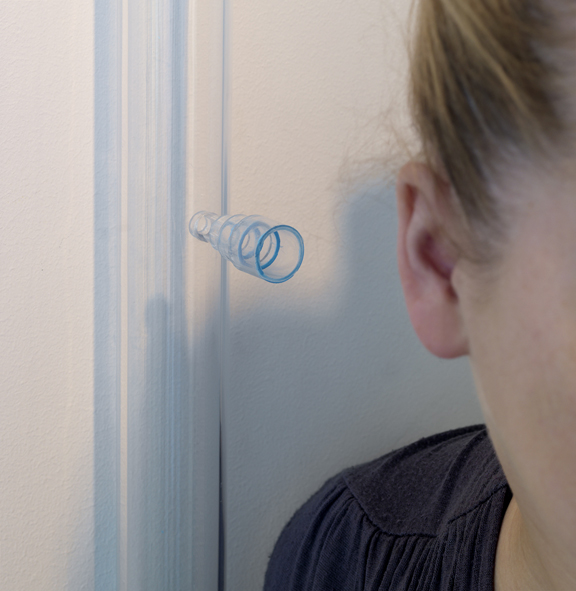Although my recent sound piece with Oriana is intended to be heard individually through headphones, I’m inspired to explore the physicality of sound from both device and spatial perspectives.
- Can sounds be choreographed to move like wind through a space? What effect does this have if people are moving versus stationary?
- What effect does seeing the sound-emitting device have on an installation? Why would it be important to hide the source of sounds or reveal them?
- How can I create my own speakers to play sounds? Or a device that emits sound it generates itself? How Speakers Work, How to Make a Speaker
A new months ago, I heard Julianne Swartz’s tunnel installation piece at Mass MoCA. Within the tunnel connecting Sol LeWitt’s gallery to the rest of the museum, tiny speakers were carefully placed behind beams and steel rods. As you walk down the corridor sounds are heard from behind you, then to the left of you, or far ahead of you, or just below you. It is as if sound is physically jumping from speaker to speaker. The spatial dimension is most evident when the speakers perform “in conversation”, each taking a turn. Often the sounds are single tones, sung individually but occasionally merging together. The metal tunnel itself is an instrument, layering in reverberation and echo.
Q2 Music fortunately recorded a brief snippet on Instagram, but the piece’s physical dimension is inevitably lost in the “two-dimensional” recording.
In a separate piece from 2012, Swartz installed meandering PVC and plastic tubing through the deCordova Museum, tracing its way from the utility room, up three floors, to the gallery. At points along the way, openings in the tubing allow for “listening leaks”.


What’s fascinating in both these installations is the physical dimension of sound. At Mass MoCA, the sound has a spatial presence through movement, jumping around within a contained space. At the deCordova Museum, visitors visually trace the sound throughout the museum and seek out opportunities in different spaces to hear the hidden audio. But at each leak location—along the stairwell, in the lobby, at the final funnel—the audio takes on a different form as it has lost bits of itself along the way.
Further Reading/Listening:
Sampo Syreeni, Sound as a Physical Phenomenon
Robert Curgenven,Climata and Sound, Landscape and the Bastard Child Soundscape